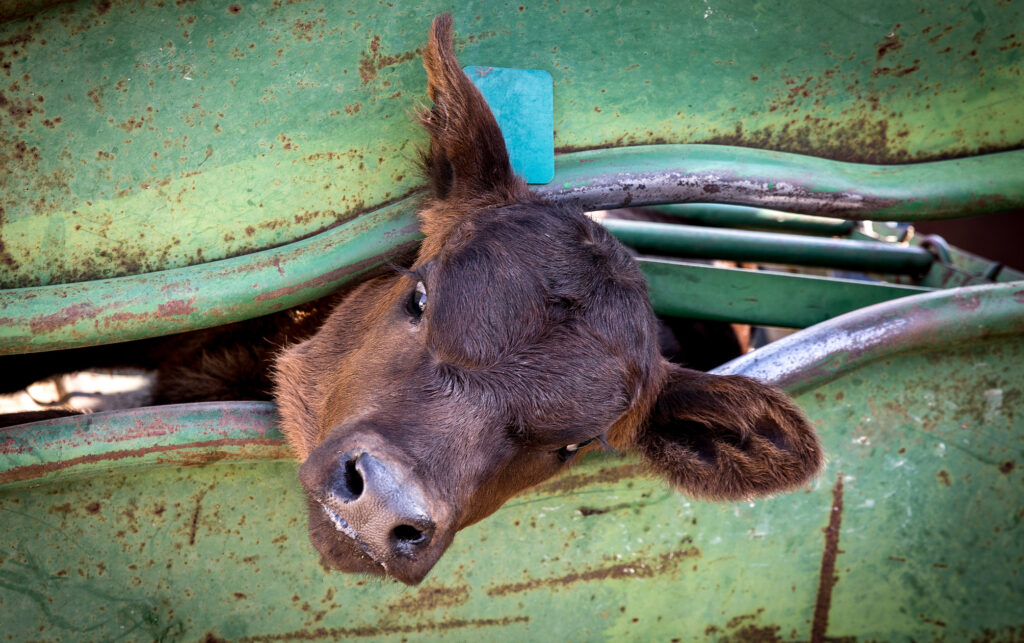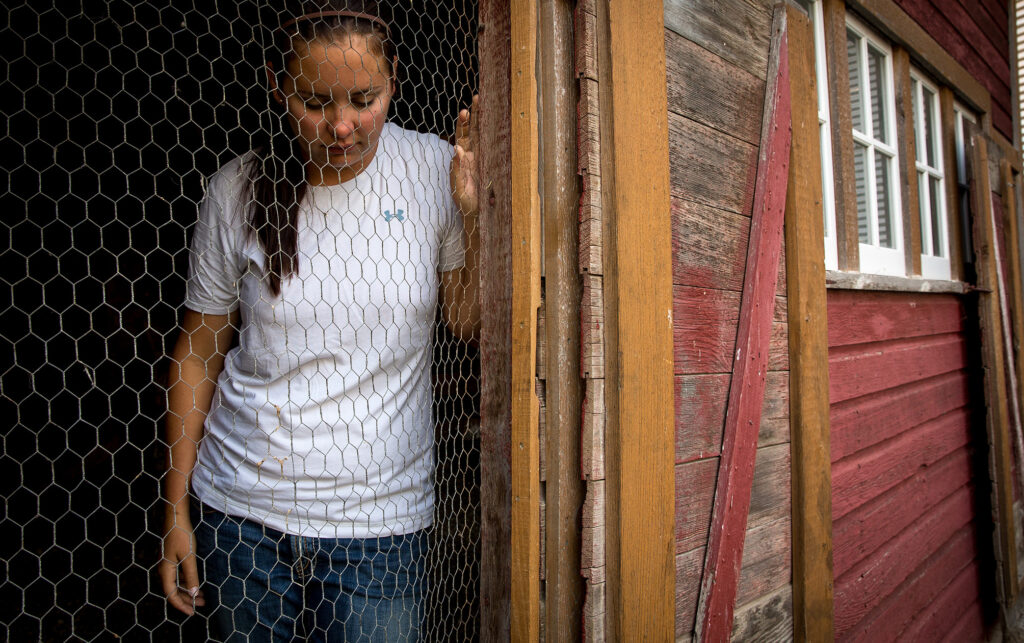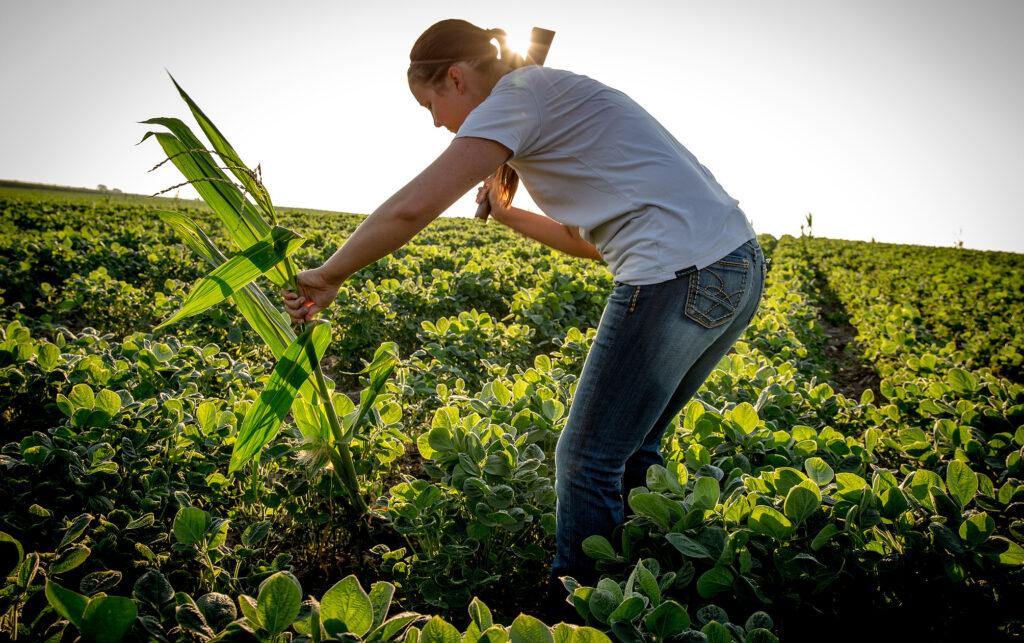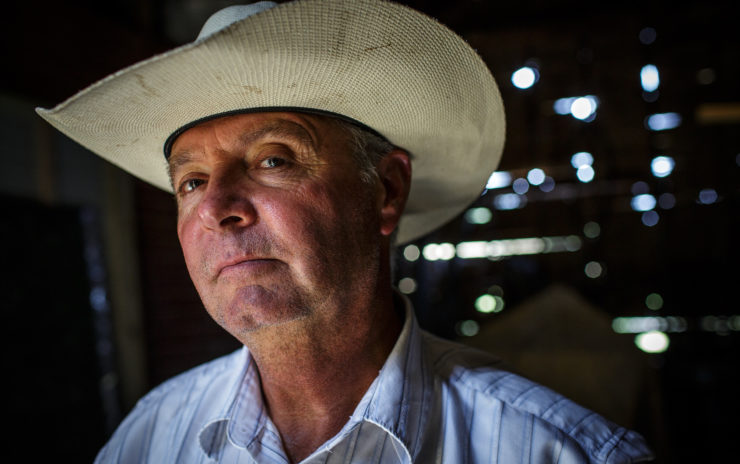For more than 15 years now, Ted Genoways has been exploring narratives of how America reaps its food.
In 2001, Genoways, a contributing editor/editor at large at On Earth and Pacific Standard, published an award-winning sequence of poems about his grandfather’s work in the stockyards and slaughterhouses of Omaha. In 2014, Genoways documented modern workers in the industrial meat industry with his nonfiction book “The Chain: Farm, Factory and The Fate of Our Food.” Nominated for a James Beard Award in Writing and Literature, the book followed a pig from “slaughterhouse to spam,” detailing what happens in Hormel’s brutal rooms.
"I think that every story works best when the writer is something of an insider-outsider and then finds a main subject who is also an insider-outsider."
Now, his latest book, “This Blessed Earth: A Year in the Life of An American Farm Family,” backtracks a dinner’s journey one step farther, going to a farm growing the soybeans that fatten hogs in America’s commercial pork industry.
Genoways and his wife, photographer Mary Anne Andrei, spent an entire year with Nebraska soybean farmer Rick Hammond, driving around with Hammond in his tractor cab for hundreds of miles, sowing, then reaping, in order to understand what life is like for the 2% of the population that provides food for the rest of us.
The book gives voice to the day-to-day, season-to-season experiences of farming, an intimate testimony from America’s provident 2%. “A universal story of family farmers and all they’re up against,” says the blurb from farming champion Willie Nelson. Last month, in collaboration with the Food and Environmental Reporting Network, Harper’s Magazine published an excerpt from Genoways’ book, titling it “Bringing in the Beans.”
“Failure is everywhere on the farm,” Genoways writes in the excerpt. “It hides in the long shadows cast by the barn at last light. It waits amid the dark stalks shifting in the fields before dawn. It’s all around, always lurking, always palpable, but just out of view.”
In “Bringing in the Beans,” Genoways depicts the soybean harvest, bringing readers into the tractor cab out in the sprawling bean fields as Rick Hammond and his soon-to-be son-in-law, Kyle Galloway, make high-stakes decisions whose outcome might keep them afloat financially -- or put them out of business.

You embedded with the Hammonds, and there is an "us" in "Bringing in the Beans" that feels authentic—that you are so close to the work, this life, this family. What advice would you give yourself back at the beginning of this project, on Day One of reporting, knowing what you know now?
The main advice that I would give myself would be simply: Be patient. Mary Anne and I started visiting the Hammonds in July 2014, a few months before the project officially began, and were in nearly constant contact with them through December 2016. The most intense period was the year between harvest of 2014 and harvest 2015, the span covered in the book, but we continued to have questions for them and to do fill-in reporting for another year. Given all of that time, I should have known that there would be more than ample opportunity to get all of the material that I needed.
But, instead, I think I was too eager at first. I was asking about every piece of equipment, getting into the nitty-gritty of yield data collection and how commodity prices are set and fluctuate. Maybe it was only natural, because it was all so new to me and so daunting that I thought I'd never figure it all out well enough to write about it. In fact, I absorbed it all over time. What I should have done more of, at the outset, was just observing and focusing more on the dynamics between family members, how they interact with each other during high-stress times on the farm, how they come back together after spats.
"When you're having a bad day at work or an argument with your family, having one person there recording the conversation and another person taking photographs is unbelievably stressful. I would say, in retrospect, that we were too intrusive at first."
As you and your wife, photographer Mary Anne Andrei, performed a "simple but intrusive" form of reporting, did James Agee's book “Let Us Now Praise Famous Men” influence what you did or did not want to do as you set about portraying the day-to-day, as well as the difficult moments, in others' lives?
First, let me say that “Let Us Now Praise Famous Men” influences everything that I write. I think any writer has a handful of touchstone books that they return to, again and again. “Let Us Now Praise Famous Men” is one of those books for me. But I didn't feel like I had to do a direct follow-up or homage to Agee and Evans -- in part, because Dale Maharidge and Michael Williamson had already done so brilliantly in “And Their Children After Them”; in part, because the kind of sharecropping represented by the Gudger family in Agee's narrative doesn't really exist in Midwestern row-crop farming anymore.
What interested me, instead, was how small to mid-size farms, run by people who have been landowners for generations, were being squeezed by corporate models of intensive agriculture on one side and shifting consumer awareness and demands on the other. In that way, this book really grew out of my last, “The Chain,” which was about pork production in America, specifically at Hormel Foods. Again and again, I heard from farmers who had signed contracts with Hormel who said that they felt like they had been turned into employees on their own land. But they also said that whenever some well-intended production change was instituted-- cage-free, free-range, antibiotic-free -- it came in the form of a top-down dictate from the corporate buyer, without any support or financial assistance for making that change. So increased consumer awareness often came at a dear cost to them.
So what I wanted to know was simple: How are farmers reacting to all of these pressures? How do these pressures manifest on a day-to-day basis? But also, I wanted to give farmers a voice in a system where they are often talked about or dictated to, but rarely heard from.
Once upon a time, the Nebraska landscape was foreign to you. You spent the early part of your life growing up outside Pittsburgh, and when you were a teenager, your family moved to Nebraska, where both your parents are from. You wrote that when you arrived, the prairie "landscape was mostly foreign," that the "flatlands...felt like the moon." I think this combination of being both outsider and insider makes you the perfect person to tell the Hammonds’ story, a story of the harvest cycle, which, as you said, Americans have forgotten. Could you possibly disagree with me? Like, was there any way in which your background put you at a disadvantage in this reporting situation?

I think that every story works best when the writer is something of an insider-outsider and then finds a main subject who is also an insider-outsider. I knew farming only secondhand from stories that my dad told about growing up on farms in western Nebraska, but the farm where my grandfather grew up was barely 20 miles from the Hammonds' land. So that gave me some credibility with them—and really just a point of contact. I knew some of the terrain that defines their lives and had my own deep connection to it. I think that made it easier for them to trust that I would understand their point of view.
But just as important, Rick Hammond, the family patriarch, is an insider-outsider himself. Rick grew up on a cattle ranch in Curtis in the southwest corner of Nebraska, as a champion rodeo rider and bareback racer, but he also never quite fit into that life. He was restless and interested in the wider world. He did a stint in the Peace Corps. He studied Latin American culture in college. He spent time ski-bumming in Colorado. So he can speak to farm and ranching life as an insider, but he's also attuned to the world outside. He's looking to be heard and understands very well how to reach his intended audience.
The book is structured around a calendar year with "interludes" -- can you say how these interludes function in the book? (And maybe say why longform narratives need these kinds of intermissions or change-ups as the story progresses)?
The interludes serve two purposes, to my mind.
First, the main narrative focuses on the Hammonds raising corn and soybeans. I wanted to also discuss their cattle operation, but I didn't want to give it equal weight. That's partly because I'd just done a book on meat production and partly because the Hammonds raise cattle as something of a side operation. The cattle weren't central to their livelihood, but they were central to understanding the Hammonds as people, especially Rick. So it didn't make sense to give the cattle operation equal space, but I had to include it in order to create an accurate and balanced portrait of the family.
Second, the interludes allowed me to vary the pacing of the narrative a little. Because the book is structured around the four seasons, each covers exactly the same amount of time, and it only follows that each would be roughly equal length. But I worried that that kind of predictable structure would also make the narrative a little monotonous. So I decided to have the long seasonal sections where the story focuses on crop production intercut with shorter sections where we get vignettes of the cattle operation. It was also nice that cattle-handling is active and labor-intensive in a way that allowed those interludes to be fast-paced and action-oriented.
OK, so to contextualize rural people (the subjects of your book) and urban people (largely your book's readership), I drummed up some statistics: In 1800, 97% of the world's population (uh, like almost evvvverybody) lived in rural areas. In 2008, for the first time, the world's population was evenly split between urban and rural areas. And as of 2014, more than half of the world’s population now lives in urban areas, and that's expected to increase to 66% by 2050. In the United States, I would venture to say, rural people--wherever they are: Alaska, Maine, Virginia, Nebraska--share a common culture. Do you feel that in addition to reporting [on what it takes to hold onto a farm], you're also interpreting [one culture to another]?
I definitely feel like an interpreter, bringing people from cities and especially the coasts into the world of agriculture in the middle of the country. And I feel an obligation, consequently, to get things right, because I might be one of only a few sources that a coastal reader is relying on. So I need to convey not only the facts but the mood and the spirit of Midwestern life. That said, I also feel like an interpreter who's still learning both the source language and the target language, so I'm constantly making interpretive missteps, as I think any honest interpreter does. My process, from story to story or book to book, is often one of course correction. If one piece is too wonky, then I try to make the next one more humane and emotional. If another piece is too in-your-face about hardship or loss, then I'll try to make the next one a slower come-on or more variable in tone.
All of that is done with an audience in mind, or multiple audiences, and seeing what reaches them best at any given moment in time. The subject matter changes, the readers are changing, certainly the national mood is changing, and, of course, my interests and obsessions are constantly changing too, so it's always a process for feeling my way through. But I'm not trying to create a piece of art outside the context of its moment. Just the opposite. I want the work to reach out and make a connection with readers right now, to shape the way they're thinking and spur certain conversations. That not only means gaining command of your subject matter but also anticipating the needs and wants of your audience. And when something important to me as a writer doesn't connect, it sometimes means being willing to circle back and try it again in a different way.

Do you think the Hammonds fully understood what it would mean to have two journalists “embed” with them for a year? Were there tricky moments, especially at the beginning?
I think the Hammonds were incredibly brave to let us do what we ultimately did. The original idea was Mary Anne's -- for a year-long photo-essay. As Mary Anne and I talked, I felt convinced that there was a place for text to go with this, something that burrowed deeper than depicting the process, in order to reveal the particulars of this family. So we started talking about a magazine piece for Harper's, and before long, we were talking about a book. All of which is to say: The Hammonds signed up for one thing, and because they were so articulate and interesting, we kept upping the demands placed on them.
"I wanted to give farmers a voice in a system where they are often talked about or dictated to, but rarely heard from."
Given all that, there were predictable moments of tension. When you're having a bad day at work or an argument with your family, having one person there recording the conversation and another person taking photographs is unbelievably stressful. I would say, in retrospect, that we were too intrusive at first. We didn't know what we needed, in order to tell the story, so we kept putting ourselves in the middle of everything. Over time, we were able to find a working method that allowed us to get everything that we needed without burning out the family.
Can you talk about how the intimacy developed between you and the Hammonds? Was there always a distance, either because you wanted to keep it or they did, or did you become close? And how did that play out in your reporting and writing?
The Hammonds were careful about maintaining a certain distance. Heidi, Rick's wife, didn't want to participate at all--and no amount of cajoling could convince her otherwise. To some degree, the others kept up an understandable guard as well. You have to remember: Whatever you say in the moment is getting recorded for posterity, and it could affect your relationships with family, with neighbors, with business partners -- and everything that your family has built for generations is riding on it. So it's not surprising that there were times that I would ask a question, and the Hammonds would respond by asking for time to think about how to answer it. They didn't stonewall me ever. They were just careful not to be reckless with off-the-cuff comments that could be misconstrued.
What was it like collaborating with your wife? (Perhaps Mary Anne wants to chime in here?) Did you and Mary Anne discuss the kinds of images needed to express the story or was Mary Anne operating independently, reporting a visual story as she discovered it?
I love reporting with Mary Anne. More than just a photographer, she's a great storyteller, and we talk a great deal about what the story is as our shared understanding of it emerges. And, yes, I have a million ideas about how to depict the story that we're trying to tell -- but I don't know the first thing about the technical aspects of photography. So it's usually just a brief, under-my-breath comment about something that I've noticed and hope to include. But more often, she's seeing something that I've missed. I rely on her to be not just a second set of eyes but a full partner who is helping piece the story together and shape it.



